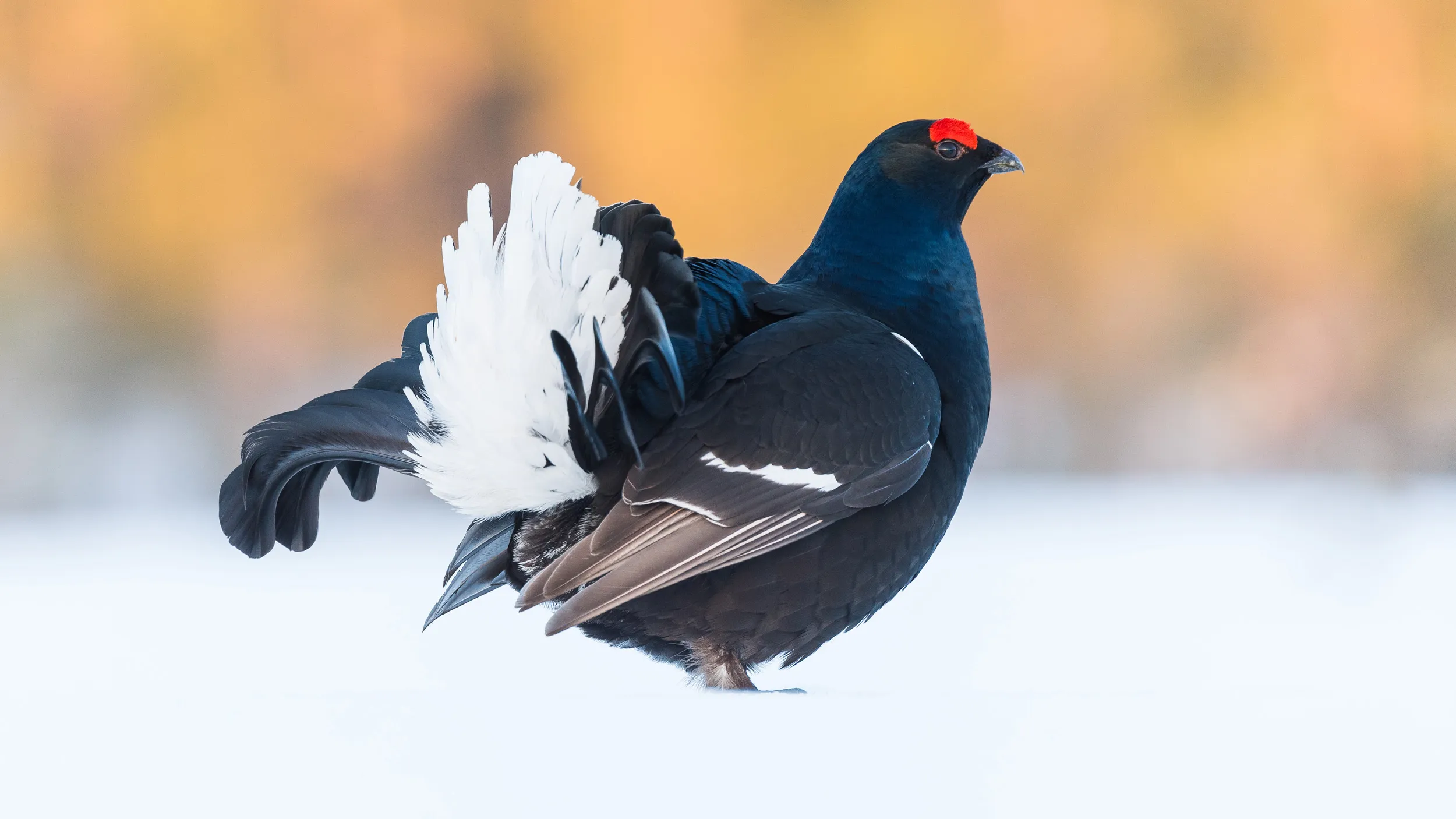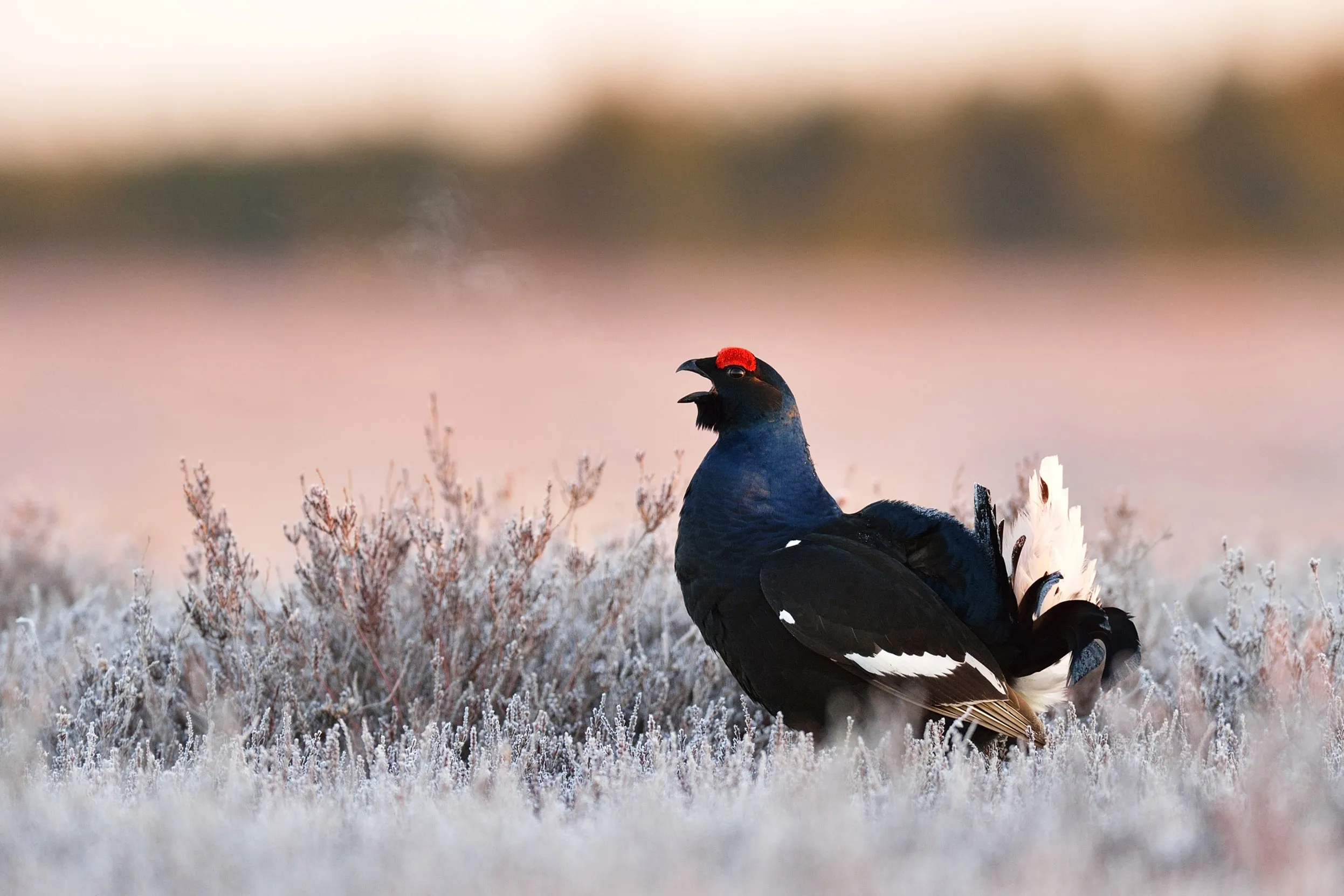
Watching endangered grouse
Please follow these guidelines in addition to the Birdwatchers' Code of Conduct, and always ensure that you have the landowner's permission before entering private land.

On this page
At risk of extinction
The Black Grouse and Capercaillie are in serious trouble. Numbers are now so low in the UK that they are at risk of extinction in many areas: the Capercaillie could be lost from Britain within the next two decades.
These birds need all the help they can get, so as birdwatchers, it is vital that we take our responsibilities seriously and avoid harming these wonderful but scarce birds.
Conservation groups and leading birdwatching magazines have drawn up this code of conduct. We want everyone to enjoy the countryside and its birdlife and hope that everyone who wishes to see the Black Grouse and Capercaillie will observe this code.
Patience and respecting the needs of the birds will often be rewarded with good views.
Disappearing grouse
Population declines are being tackled by:
- encouraging appropriate grazing by sheep and deer
- increasing habitat quality
- removing or marking deer fences
- discouraging fox snares, which are known to kill the Capercaillie
- reducing rates of predation
Many conservation organisations and private landowners are working hard to help these birds, through the UK Biodiversity Action Plan.
Shooting the Capercaillie is now illegal and there is a voluntary moratorium on shooting Black Grouse. However, the declines continue in many areas and the Black Grouse and Capercaillie need all the help we can give them. You can help too, when watching or photographing them.
Black Grouse and Capercallies lek at traditional sites as part of their mating ritual, generally in the spring. The lek is essential to the birds' breeding success, but they are easily disturbed here. If this happens in the key period of April to early May, the birds may not mate at all.
Grouse are also vulnerable when nesting, rearing young and during severe winter weather.
Watching black grouse
- Black Grouse lek for much of the year, the key period being April and May.
- Watch leks and feeding birds from a vehicle. Black Grouse pay little attention to stationary vehicles which are at least 100 metres away. Ensure that you do not block access or disturb nearby residents. Avoid approaching a lek on foot, which usually disturbs the birds.
- Arrive at leks before daybreak. A vehicle stopping once it is light can disturb the birds. Stay in your vehicle and watch quietly through binoculars and telescopes. Get the flask of coffee from the boot before your vigil. Don't start the engine until after lekking has wound down, usually about two hours after dawn. Alternatively, consider watching a lek in the evening.
- Keep to footpaths, especially between May and August, when there may be nesting females and young birds present.
- Keep dogs under control (on a lead) when close to Black Grouse habitat and do not bring dogs into the field when you are watching Grouse.

Watching the capercaillie
- Capercaillie are a rare and declining bird known to be highly sensitive to disturbance.
- They are listed on Schedule 1 of the Wildlife and Countryside Act 1981, which makes it illegal to intentionally or recklessly disturb the birds during the breeding period (March –August). Viewing during the breeding season should only be undertaken under licence from NatureScot. Without a licence, Capercaillie leks should not be visited at all during the critical March-May period.
- Nesting females (hens) or hens with broods may be present between May and August. A disturbed hen could abandon her nest altogether and family parties can become separated, exposing them to increased risk of predation, chilling in poor weather or colliding with fences.
- Given the vulnerability of this species, and the recent decline, the advice is not to go looking for Capercaillie.
- Capercaillie do visit forest tracks e.g., to grit or drink from puddles. If birds are encountered, remain still and observe them quietly, letting them move off by themselves.
- Sometimes Capercaillie show atypical behaviour, losing their fear of people, vehicles or dogs and displaying in prominent places. Whilst these birds may seem an easy and low-risk viewing opportunity they can attract a huge amount of attention from bird-watchers and photographers.
- This causes unnecessary stress to a bird that’s already fighting for survival. If encountered, the responsible course of action is to withdraw immediately and not share the bird’s location.
- If you’re aware of people acting irresponsibly and causing disturbance to Capercaillie then you can report the incident to a Wildlife Crime Officer by calling Police Scotland on 101.
Thank you
We hope the UK's birdwatchers will support this code. We are all working to ensure that the Black
Grouse and Capercaillie continue to inspire wonder.
Please help this effort by being responsible.